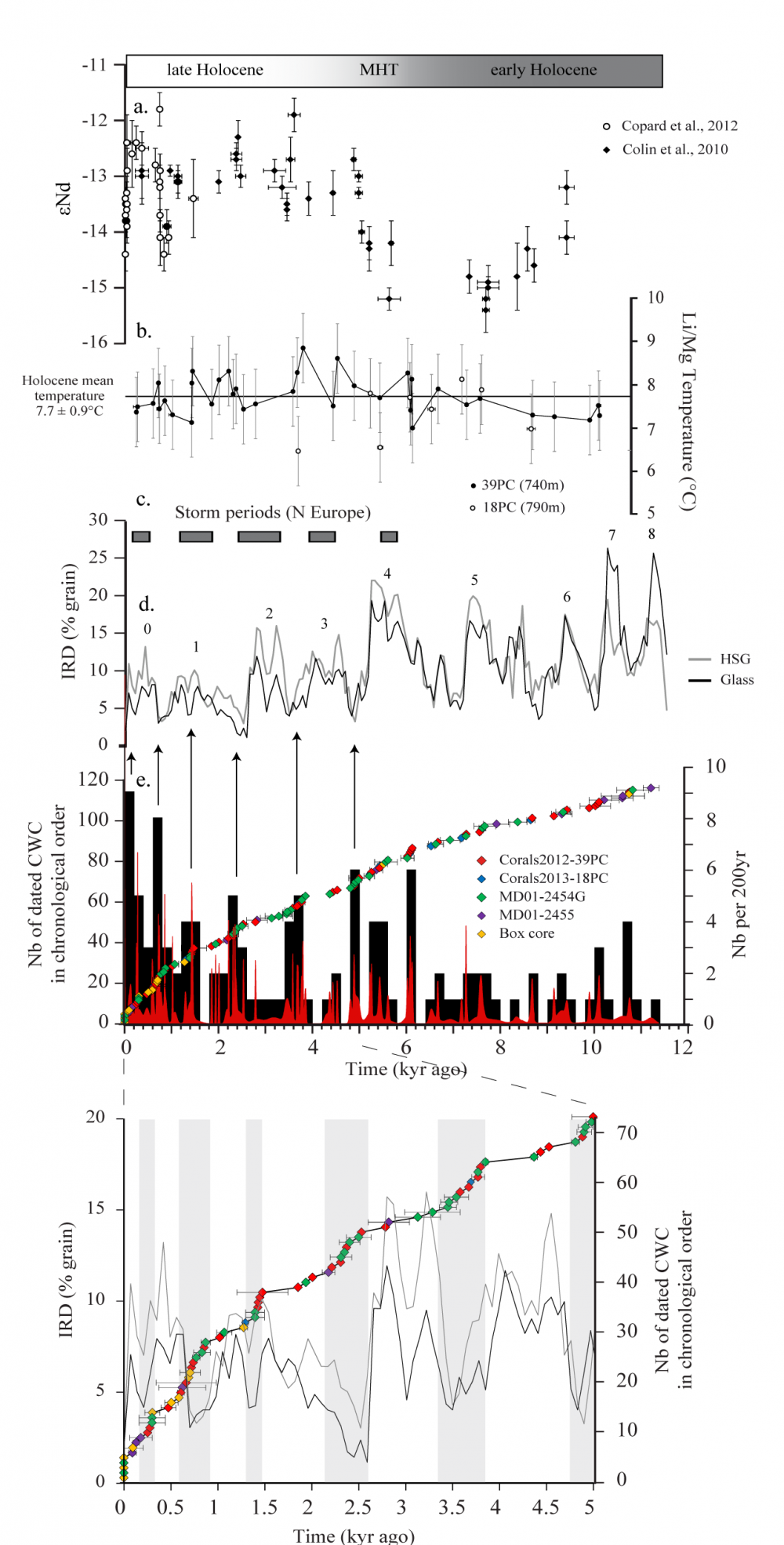
(a) εNd & (b) Li/Mg temperature obtained from CWC collected on the SW Rockall Bank; (c) Storm periods in Northern Europe; (d) IRD (Glass & Hematite Stained Grains: HSG) abundance in core VM29-191 (Bond et al., 1997) and (Sorel et al., 2012). (e) Compilation of U-Th datings.
U-Th ages and temperatures derived from Li/Mg have been measured on coral fragments of L. pertusa and M. oculata collected from sediment cores, which were taken from cold-water coral (CWC) mounds at 700-790 m water depth at the SW Rockall Trough margin. Data from this study combined with previous ones from other cores collected in the same mound region allowed us to not only estimate the occurrence of CWC at the SW Rockall Trough margin during the Holocene, but also to constrain the environmental conditions driving variability in CWC growth. CWC abundance is marked by a pronounced increase in the mid-Holocene (~6 ka) and is modulated by millennial-scale variability throughout the late Holocene. The mid-Holocene proliferation of CWC coincide with lowest IRD abundances and a major re-organization of the circulation at thermocline depth in the Rockall Trough, marked by the progressive replacement of the fresh-cold SubArctic Intermediate Water (SAIW) by the saltier and nutrient-rich Eastern North Atlantic Water (ENAW). This event must have established a modern-like winter mixed layer and thermocline structure, generating suitable conditions for enhanced surface productivity, downslope transport of food particles, bottom current acceleration at mound depth and thus CWC growth. Several short time intervals of decreased CWC occurrences closely match prominent increases in North Atlantic drift ice and storminess in Northern Europe. We therefore propose that high detrital supply and/or changes in the vertical density gradient associated to millennial-scale ice rafted detritus (IRD) events are likely the controlling factors for CWC growth and subsequently mound formation of the SW Rockall Trough margin.
Références :
Bonneau L., Colin C., Pons-Branchu E., Mienis F., Tisnérat-Laborde N., Blamart D., Elliot M., Collart T., Frank N., Foliot L., Douville E. , 2018. Imprint of Holocene climate variability on CWC reef growth at the SW Rockall Trough margin, NE Atlantic. Geochem., Geophys., Geosyst. 19, 2437-2452. Doi: 10.1029/2018GC007502
Project: ANR HAMOC with Lucile Bonneau (12 month-postdoc)






